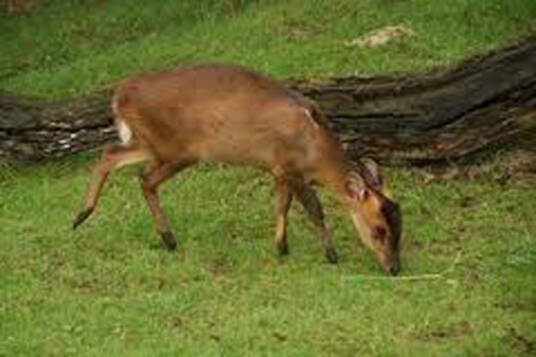Muntiacus puhoatensis
IUCN
LCBasic Information
Scientific classification
- name:Muntiacus puhoatensis
- Scientific Name:Muntiacus puhoatensis,Puhoat Muntjac,Przewalski's muntjac
- Outline:Ungulata
- Family:Artiodactyls Cervidae Muntjac
Vital signs
- length:No verification information
- Weight:No verification information
- lifetime:No verification information
Feature
A newly discovered species
Distribution and Habitat
It is only found in the Pu hoat region of Vietnam, which borders Laos.
Appearance
The coat is short and thin; the limbs are slender, and the hooves are narrow and pointed; the upper canine teeth are large and curved into fangs, but smaller than those of musk deer and deer; the skull is slightly triangular, with prominent tear pits. The eye sockets are sunken and there are facial glands; there are foot glands; there is no gallbladder. The 4th chamber of the stomach is for rumination. There are 32 to 34 teeth. The legs are long and slender, good at running. They have horns, which are the second characteristic of male muntjacs and are also weapons for fighting for mates. Their growth and shedding are affected by the pituitary gland and testosterone. The newly grown horn is called a velvet, which is covered with skin, has hairs, and has a large blood supply and branches. As the horn grows, the blood supply gradually decreases, and the skin dries up and falls off. The foot has 4 toes, the third and fourth toes are well developed to support the weight of the body, while t
Details
The scientific name of the Puhoat Muntjac is Muntiacus puhoatensis, and its foreign name is Puhoat Muntjac. It is a newly discovered species that is only distributed in the Pu hoat area of Vietnam, which borders Laos. Some scientists also believe that the Puhoat Muntjac and the Luo Muntjac are the same species, and their habitats and behaviors may be similar.

Listed in the 2008 Red List of Threatened Species of the World Conservation Union (IUCN) ver 3.1 - Data Deficient (DD).
Protect wild animals and stop eating game.
Maintaining ecological balance is everyone's responsibility!








